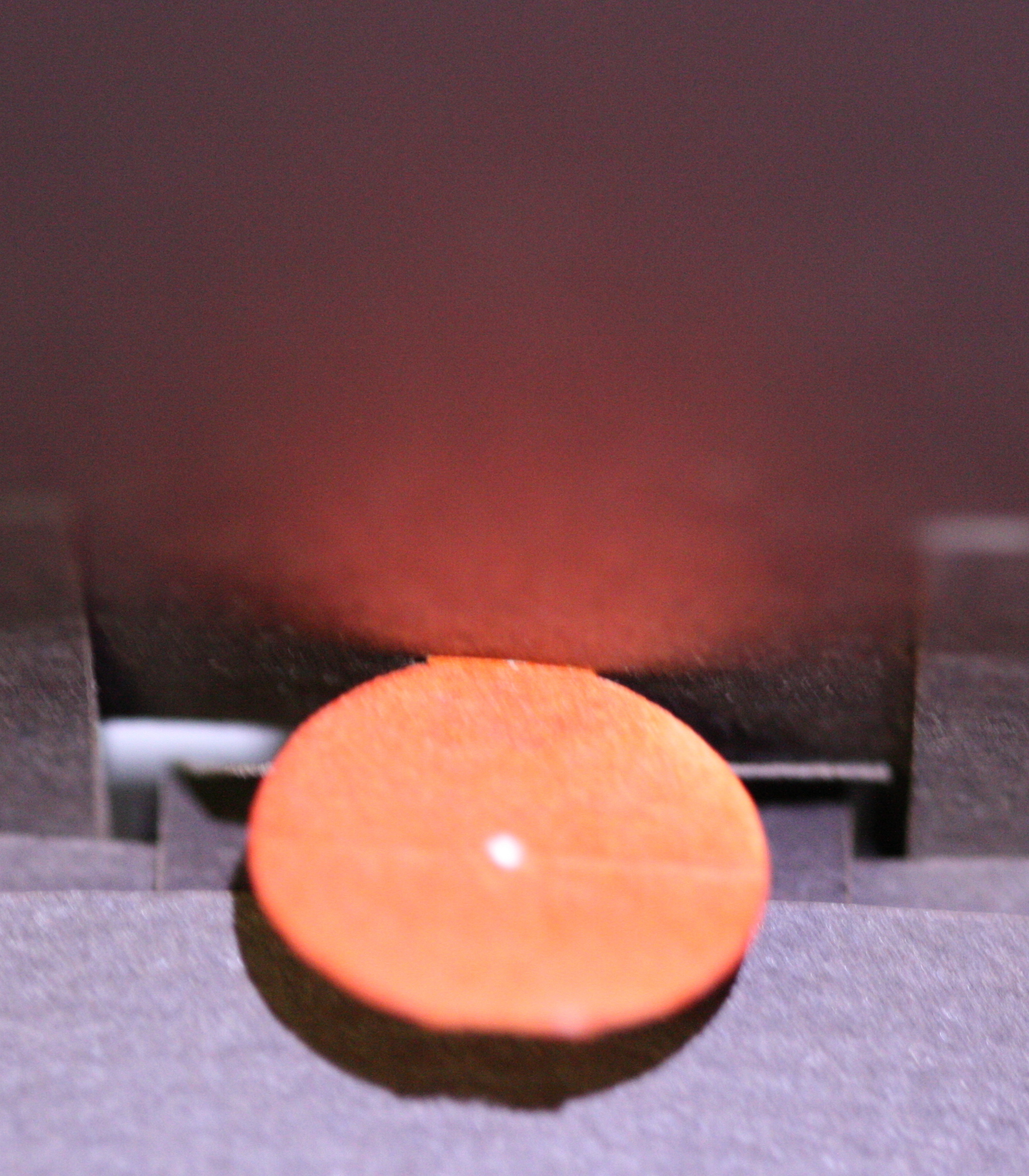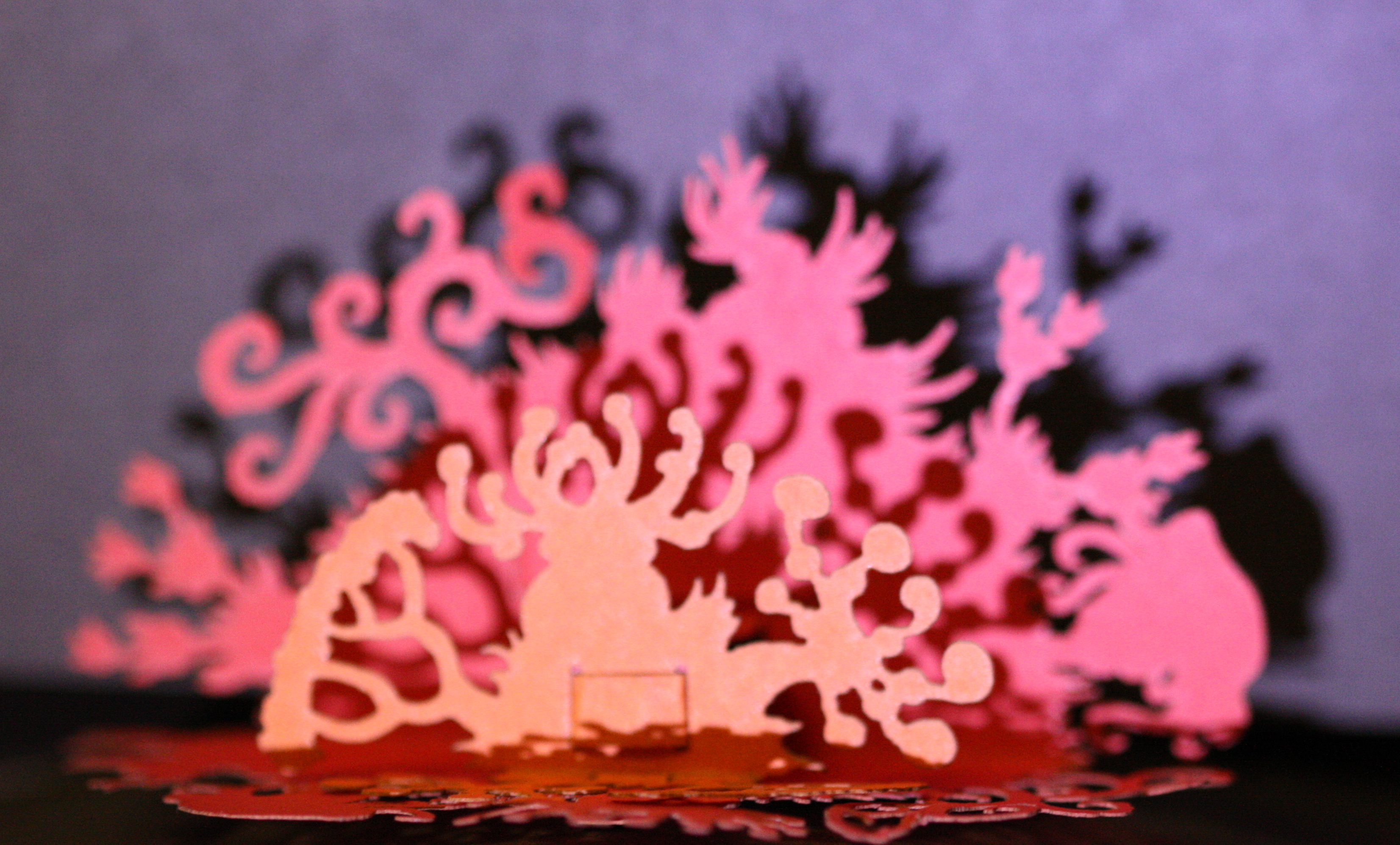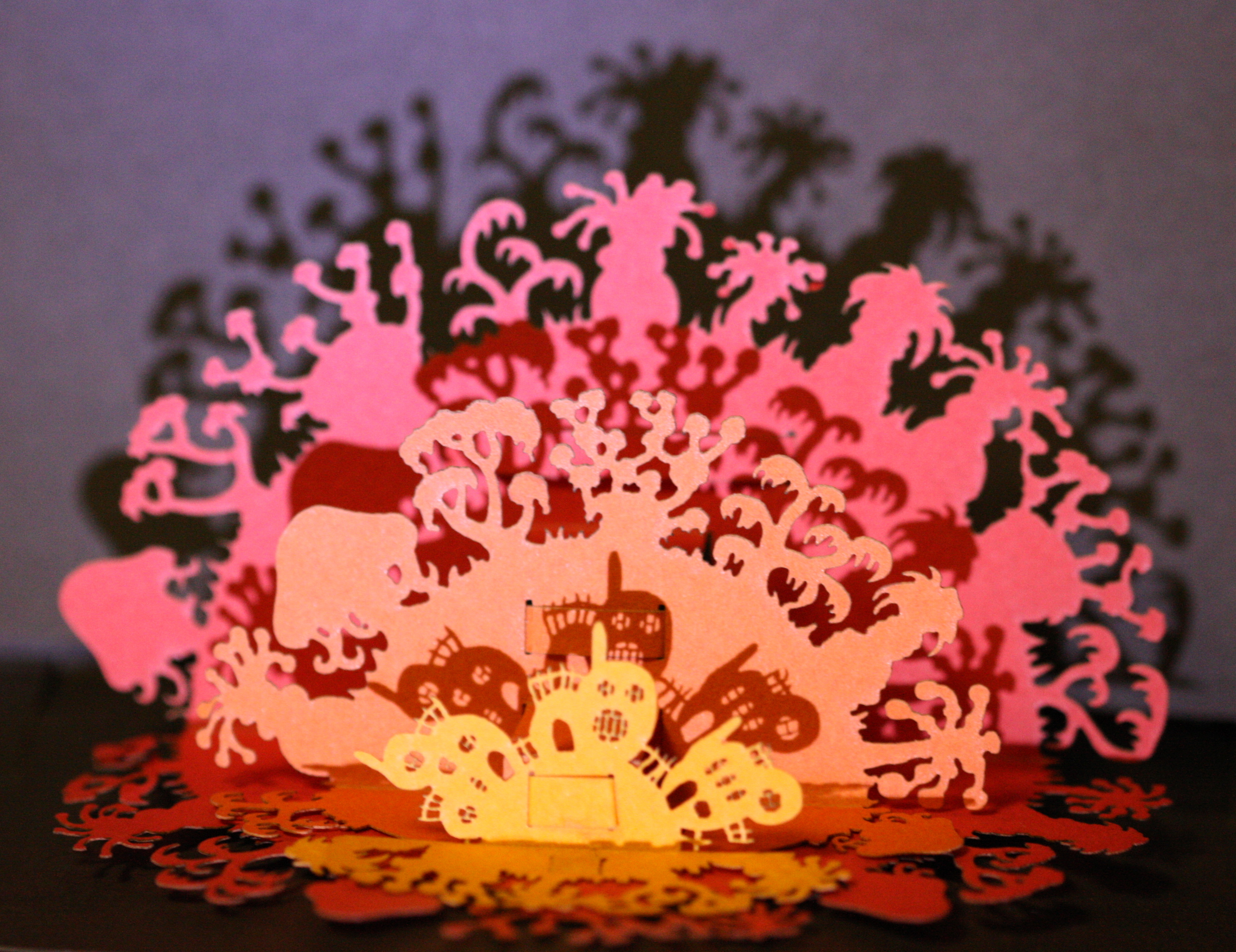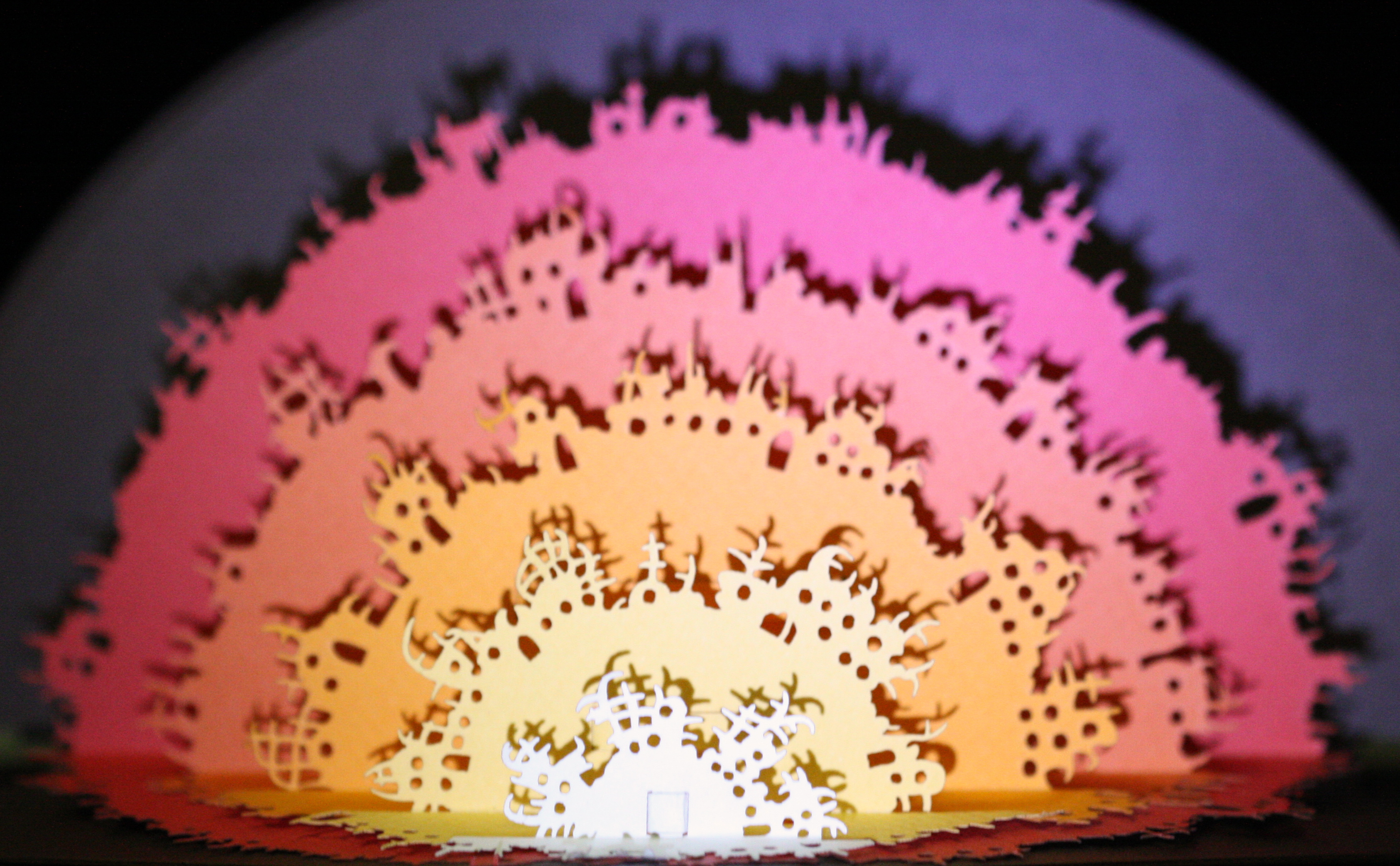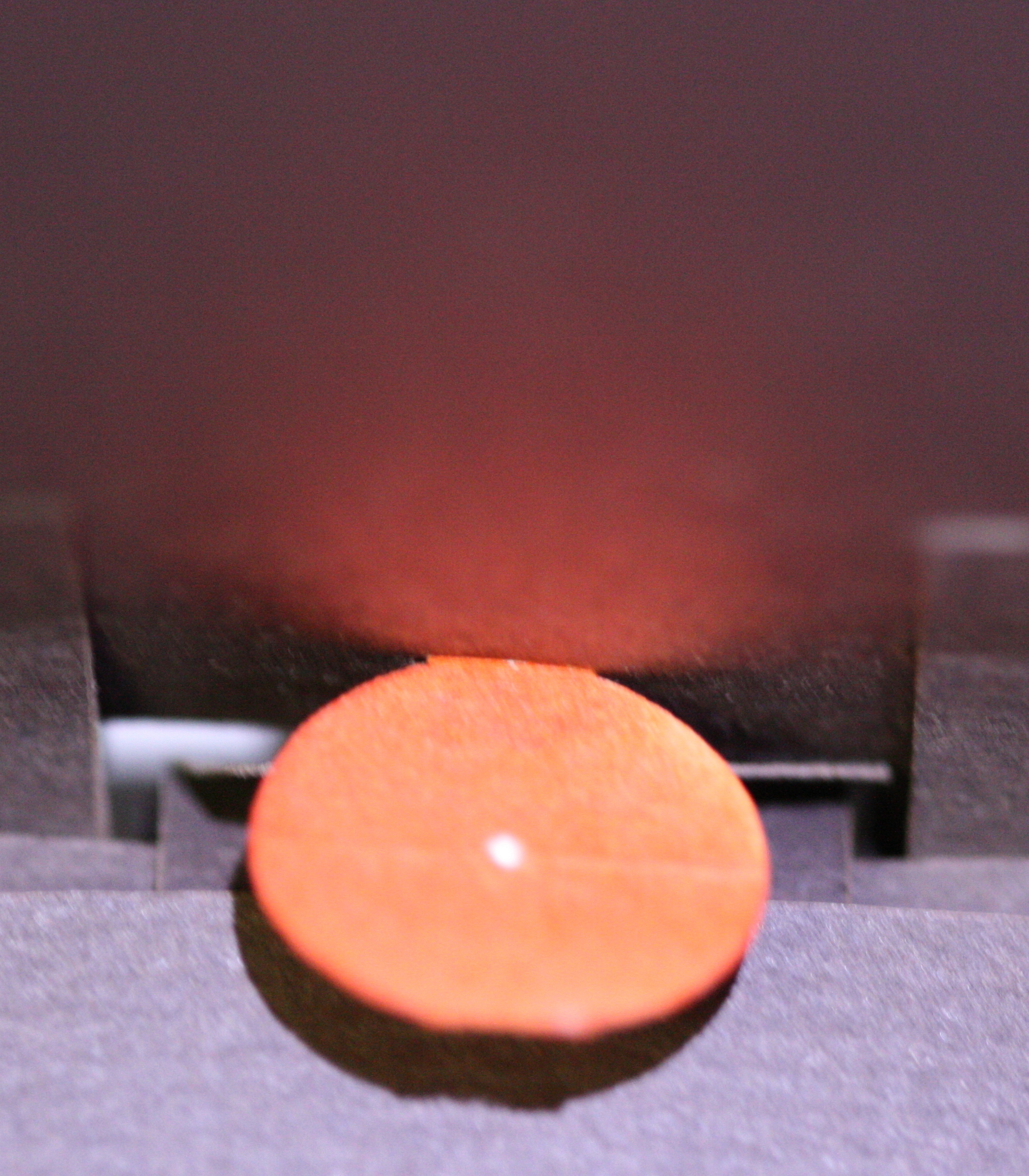Imaginary Landscapes: “The Seedling” by Natalie Moss (2013)
“The Seedling” tells the tale of the life cycle of a world, beginning and ending with a small circular seed which represents the potential for life. As the world grows, ages and dies, it moves through several stages: the plant stage, the plant and people stage (people represented by their buildings and cities), the people stage (which could also be called post-plant), and the post-people stage. Plants and buildings evolve from page to page. Because civilization is part of the same continuum as nature, rather than being opposed to it, they are represented with artistic styles unified by their focus on the circle. The entire piece is constructed in the form of a semi-circular pop-up book. The repetition of circles is meant to metaphorically reference many round or cycling forms: planets, seeds, the universe, the cycle of seasons, the cycle of a day, and the cycle of life. Just like a planet, however, only half of the circle is ever in full light, though the half in shadow can be seen as each layer of paper casts its form on the layer beyond.
This piece uses 98 pieces. It is focused on the number seven, which was inspired by the Biblical story of creation in which the world was created in seven days. This world is not only born but also lives and dies in seven pages, the last page reverting it to its original seed-like form. Since the metaphorical circle is divided in two, seven is raised to the power of two and multiplied by two to obtain the total number of pieces. Also, if the pieces which form the title on the cover are not included, there are 77 pieces, which is literally two sevens written next to each other.
Paper was chosen mostly for its practical and aesthetic aspects–foldability and colors reminiscent of a flame flaring brighter and brighter before dying down again in the darkness of space–but also because of its tradition use in pop-up book format. This project is a book because books imply a sequential format, and it is difficult to view multiple pages at once, though the book can always be re-read (giving it a cyclical nature).
“The Seedling” is ultimately about hope. I offer hope that even after humanity is gone there will still be the potential for life, growth, and wonder in the universe.

